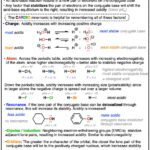Constructivism is a prominent learning theory that emphasizes the active role of learners in constructing knowledge. This approach contrasts sharply with traditional teaching methods, where students passively receive information. Understanding these differences is crucial for educators and students alike. This article explores the core principles of constructivism and compares it with traditional learning approaches, highlighting the key distinctions in a table format, perfect for a student researching learning theories.
Constructivism: An Active Learning Approach
Constructivism posits that learners actively build their understanding of the world through experiences and reflection. Instead of simply absorbing information, individuals interpret new knowledge based on their existing understanding, a framework often referred to as a schema. Two key processes within constructivism are:
- Assimilation: Integrating new information into an existing schema.
- Accommodation: Modifying an existing schema to accommodate new information that doesn’t fit.
For instance, a child who believes all birds can fly might encounter a penguin. This new information challenges their existing schema. Through accommodation, the child adjusts their understanding to include flightless birds. This active process of constructing knowledge is central to constructivist learning.
Constructivist theory suggests that learning is most effective when:
- Experiential: Students engage in active learning experiences rather than passive reception.
- Social: Learning occurs within a social context, with collaboration and interaction playing a vital role.
- Facilitated: Teachers act as facilitators, guiding students to construct their own knowledge.
Alt: A diagram illustrating Kolb’s experiential learning cycle, a key concept in constructivist learning theory, showing the cyclical process of concrete experience, reflective observation, abstract conceptualization, and active experimentation.
Comparing Constructivist and Traditional Classrooms
A student creating a table to compare learning theories would find significant differences between constructivism and traditional approaches. The table below summarizes these key distinctions:
| Feature | Traditional Classroom | Constructivist Classroom |
|---|---|---|
| Curriculum | Focuses on basic skills, parts before the whole. | Emphasizes big concepts, whole before parts. |
| Curriculum Emphasis | Fixed, predetermined curriculum. | Flexible, responsive to student questions and interests. |
| Materials | Textbooks, workbooks. | Primary sources, manipulative materials. |
| Learning Process | Repetition, memorization. | Interactive, building on prior knowledge. |
| Teacher’s Role | Disseminator of information, authority figure. | Facilitator, guide, co-learner. |
| Assessment | Tests, correct answers. | Student work, observations, process over product. |
| Knowledge | Static, unchanging. | Dynamic, evolving. |
| Student Interaction | Primarily individual work. | Primarily group work. |
Alt: A table comparing traditional and constructivist classroom features across various aspects like curriculum, materials, learning process, teacher’s role, and assessment.
Essential Components of Constructivist Teaching
Effective constructivist teaching incorporates several key elements:
- Eliciting Prior Knowledge: Understanding students’ existing knowledge is crucial for building new connections.
- Creating Cognitive Dissonance: Challenging students’ preconceptions encourages them to revise their understanding.
- Applying Knowledge with Feedback: Providing opportunities for application and feedback reinforces learning.
- Reflection on Learning: Encouraging students to reflect on their learning process deepens understanding.
Conclusion
For a student creating a table comparing theories, constructivism offers a rich contrast to traditional learning models. By emphasizing active learning, student-centered experiences, and the construction of knowledge, constructivism provides a framework for engaging and effective education. Understanding these differences is essential for anyone involved in the learning process.
